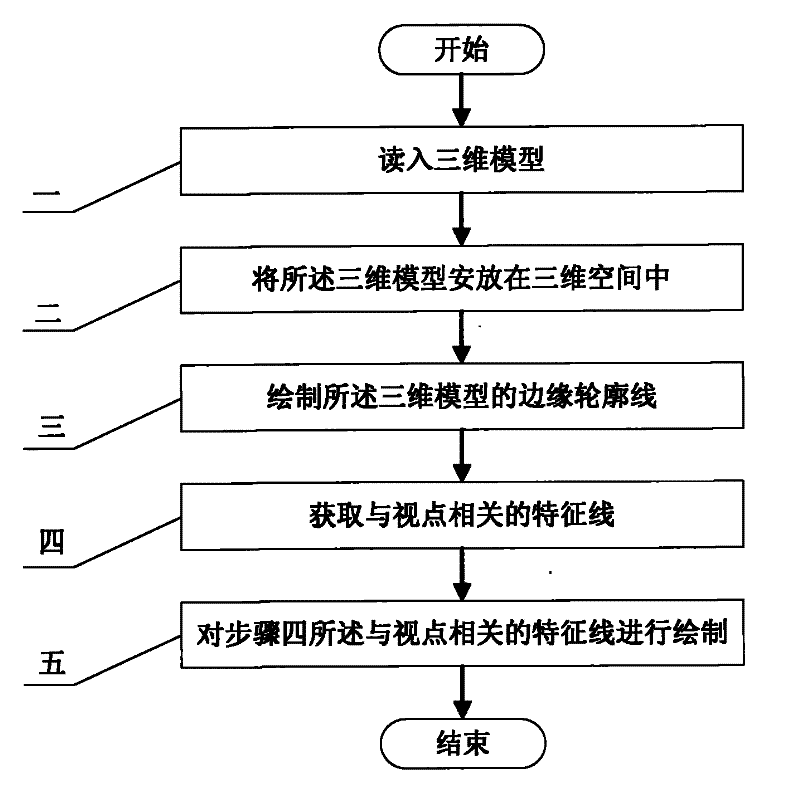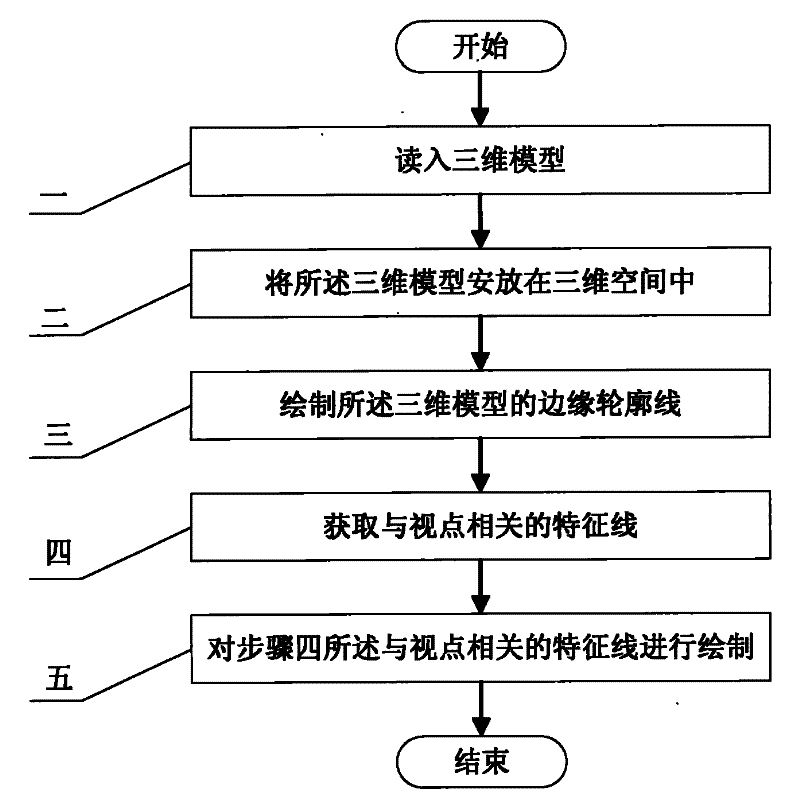Three-dimensional auxiliary two-dimensional pattern drafting method
A two-dimensional graphics and three-dimensional technology, applied in the field of digital entertainment, to achieve the effect of accelerating the animation production process, expanding the source, and enriching the picture effect
- Summary
- Abstract
- Description
- Claims
- Application Information
AI Technical Summary
Problems solved by technology
Method used
Image
Examples
specific Embodiment approach 1
[0020] Specific implementation mode one: the following combination figure 1 Describe this embodiment, this embodiment is a three-dimensional assisted two-dimensional graphics drawing method, the steps to realize this embodiment include:
[0021] Step 1, read in the 3D model, obtain the normal vector of the vertex of the 3D model, the principal curvature of the vertex, the Gaussian curvature of the vertex and the direction of the principal curvature of the vertex;
[0022] Step 2. Place the 3D model in the 3D space, allowing translation and rotation of the position of the 3D model. The user can easily determine the spatial position relationship and viewing angle between the 3D models, and place the 3D model The model is projected in the 2D animation scene;
[0023] Step 3, drawing the edge outline of the three-dimensional model;
[0024] Step 4, obtaining feature lines related to the viewpoint;
[0025] Step 5, drawing the feature line related to the viewpoint described in s...
specific Embodiment approach 2
[0027] Specific embodiment two: the difference between this embodiment and embodiment one is that the method of drawing the edge contour line of the three-dimensional model in step three is: dividing the three-dimensional model into a plurality of triangles, if the three triangles of each triangle normals of vertices with sight dot product different numbers, use the Hermite interpolation method to obtain the The straight line is a part of the edge contour of the three-dimensional model, and the dot product of all the three vertices of the triangle obtained by different numbers The straight lines are drawn together to form the edge outline of the three-dimensional model, and other steps and technical solutions are the same as those in Embodiment 1.
specific Embodiment approach 3
[0028] Specific embodiment three: the difference between this embodiment and embodiment two is that the dot product in the triangular slice is obtained by using the Hermite interpolation method The method of the straight line is: utilize the following formula val(t)=[2(val 0 -val 1 )+d 0 +d 1 ]×t 3 +[3(val 1 -val 0 )-2d 0 -d 1 ]×t 2 +d 0 ×t+val 0 Get Triangle V 0 Vertex, V 1 dot product of vertices , where t is the interpolation parameter, and t∈[0,1], val 0 is V 0 dot product of vertices, val 1 is V 1 dot product of vertices, d 0 and d 1 are V 0 Vertex and V 1 The first order derivative of the curvature in the direction of the vertex's apparent projection, and other steps and technical solutions are the same as those in Embodiment 2.
PUM
 Login to View More
Login to View More Abstract
Description
Claims
Application Information
 Login to View More
Login to View More - R&D Engineer
- R&D Manager
- IP Professional
- Industry Leading Data Capabilities
- Powerful AI technology
- Patent DNA Extraction
Browse by: Latest US Patents, China's latest patents, Technical Efficacy Thesaurus, Application Domain, Technology Topic, Popular Technical Reports.
© 2024 PatSnap. All rights reserved.Legal|Privacy policy|Modern Slavery Act Transparency Statement|Sitemap|About US| Contact US: help@patsnap.com










